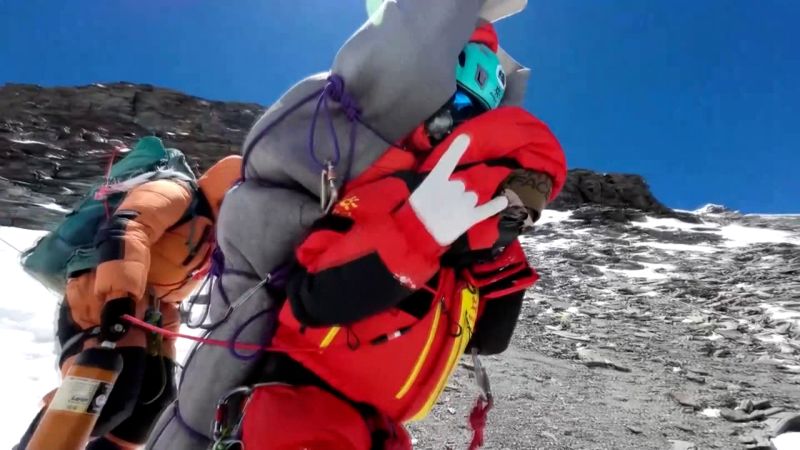
Sherpa who saved climber in Everest death zone says it was hardest rescue ‘in my life’
Gelje Sherpa was on his way to the top of the world’s highest mountain when he spotted the climber clinging to the rope.
They were in the “death zone,” an area near the summit of Mount Everest where temperatures are extremely low and where there isn’t enough oxygen to breathe unaided for more than a few minutes.
Other climbers and guides “just focused on the summit,” he said – wary of stopping at an altitude where the body is rapidly deteriorating and where many Everest fatalities occur.
Already this year, 12 people have died and five are missing on Everest as the spring climbing season comes to an end, according to Nepali officials.
Gelje – Nepali sherpas traditionally go by their first names – was guiding a client to the 8,849-meter (29,032 feet) summit when he made a decision: they would abandon their journey in a bid to save the Malaysian climber.
It was a near-impossible task: Gelje had to strap the climber to his back and carry him down 600 meters (1,900 feet) for about six hours before another guide joined the rescue, Reuters reported.
They then took turns carrying the climber, wrapped in a sleeping mat, sometimes having to drag him through the snow, before reaching a helicopter that carried them down to base camp.
According to the Nepali government, the rescued climber was flown home to Malaysia once his condition improved. His name has not been released to the media.
Deadly season
This climbing season has been one of the deadliest on record, according to Bigyan Koirala, an official at Nepal’s Tourism Department.
Spring is the prime time to climb Everest, although some mountaineers might climb in the less favorable autumn season. There’s a brief window of time – usually after mid-May – when temperatures are warmer, and the high-altitude winds known as the jet stream have moved away from the mountains.
Four Nepalis and eight foreigners have died on Everest this spring, according to Yubaraj Khatiwada, a director at the tourism department.
And of the five missing, three are Nepalis and two are foreigners.
Gelje, the sherpa, said there were a few likely reasons why this season has been so deadly. The weather has been poor and extremely cold, and some climbers lack experience or sufficient training for such a high altitude.
In recent years, as death tolls have risen on the mountain, climbers and experts have also warned of the dangers of overcrowding. A single route to the summit means there can be delays; one photo in 2019 went viral, depicting hundreds of climbers huddling on an exposed ridge to the summit, in a long queue to reach the top – all in the critical area nicknamed the “death zone.”
Nepal issued permits for a record 478 climbers for this season’s expeditions to Everest, according to the department’s data.
It’s not only Everest that has seen growing popularity as a bucket list destination for international travelers. The world’s second-tallest mountain, K2 in Pakistan, just had its busiest season ever.
